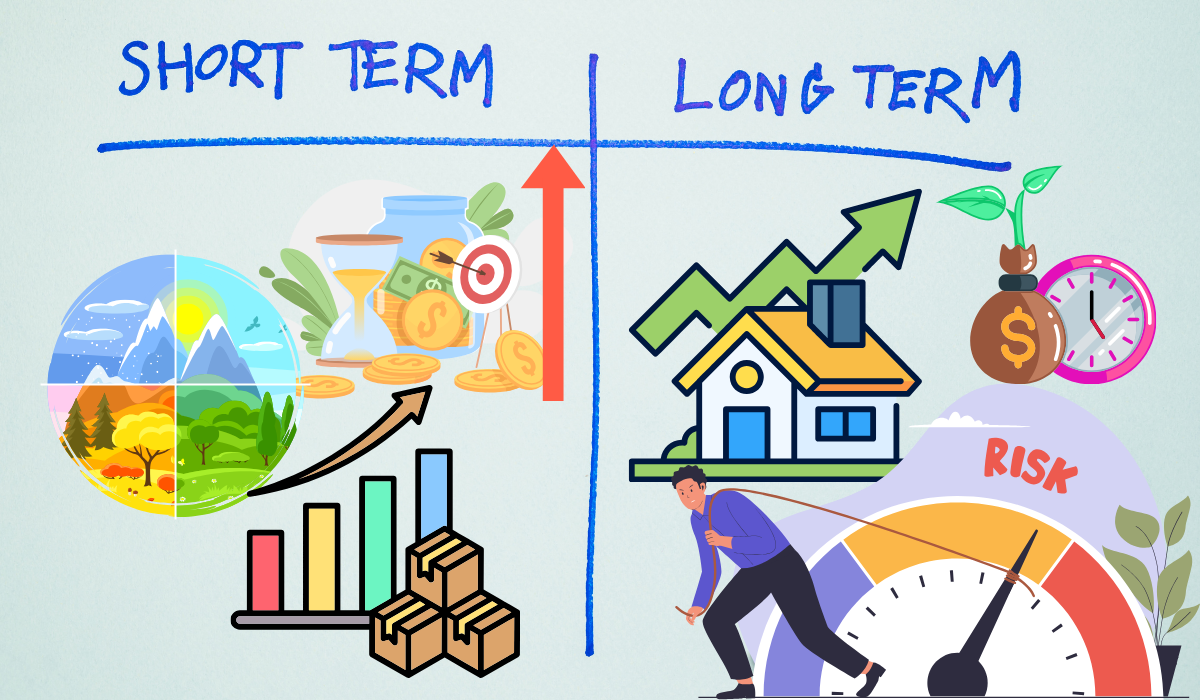
Seattle is a city of two extremes when it comes to the rental market. In summer, the Pacific Northwest transforms into one of the most desirable travel destinations in the world. In winter? Not so much.
At GPS Renting, we manage over 600 long-term rentals, and through our short-term vacation rental company Perch, we manage more than 120 furnished homes and townhomes across the Seattle region. We’ve seen what works—and what doesn’t—through all four seasons.
This article breaks down what you need to know about seasonality, occupancy, income potential, and hidden costs so you can decide: Is short-term rental (STR) still the best choice? Or is long-term rental (LTR) your safer bet?
Key Takeaway
While short-term rentals in Seattle can shine during the summer, they come with seasonal volatility, higher expenses, and greater management demands. Long-term rentals, especially with GPS Renting at the helm, provide a reliable, low-stress path to consistent income and long-term asset growth. If you want peace of mind, predictable cash flow, and expert local support—GPS Renting is your partner in rental success.
Summer in Seattle: Strong Demand, But Limited
From June to September, Seattle’s short-term rental market thrives. The weather is unbeatable, with mild temperatures, no humidity, and endless outdoor attractions. During this time:
- Properties can rent for $400–$500 per night
- Popular townhomes can book out 80–90% of the month
- 3-bedroom homes in hot neighborhoods like Capitol Hill, Ballard, or Green Lake can generate $12,000–$15,000 per month
However, even in peak season, 100% occupancy is rare. Let’s use a realistic 90% summer occupancy:
Summer Income Calculation (June to Sept):
- 120 days × 90% occupancy = 108 nights
- 108 nights × $400/night = $43,200
That’s your best-case stretch.
Winter: The Income Collapse
The STR slowdown in Seattle is very real. From January through February, travelers disappear, and many STRs sit empty. We’ve seen units that rent for $500/night in July go completely unbooked in January.
Let’s break it down:
Winter Income Calculation (Jan–Feb):
- 60 days × 15% occupancy = 9 nights
- 9 × $125/night = $1,125
That’s just $562/month, not even covering utilities.
Rest of Year (Oct–Dec, Mar–May):
- ~210 days × 50% occupancy = 105 nights
- 105 × $200/night = $21,000
Annual STR Income Breakdown
| Period | Nights Booked | Avg Rate | Income |
|---|---|---|---|
| Summer (Jun–Sep) | 108 | $400 | $43,200 |
| Winter (Jan–Feb) | 9 | $125 | $1,125 |
| Shoulder (Mar–May, Oct–Dec) | 105 | $200 | $21,000 |
| Total Gross | – | – | $65,325 |
Expenses That Eat Your Profit
STRs may look profitable on paper, but here are costs that add up fast:
- STR platform fees (Airbnb, Vrbo, etc.): 10–15% = ~$6,500/year
- Utilities + Internet: ~$4,000/year (owner pays everything)
- Cleaning & Maintenance: $3,000/year (frequent turnovers)
- Furniture Setup (Amortized): $15,000–$20,000 initial setup = ~$3,000/year
- Higher Repair Costs: Guests report small issues as urgent (broken bed legs, missing utensils)
- STR Management Fee: Typically 20–25% = ~$13,000–$16,000/year
After expenses, net income often drops to around $32,000–$35,000/year.
Long-Term Rental: The Understated Winner
Now consider a long-term tenant paying $3,000/month for the same property:
- Gross annual income = $36,000
- Tenants pay their own utilities
- No platform fees
- No setup furniture costs
- Maintenance is lighter and less frequent
- GPS Renting charges just 10% management = $3,600/year
Net income: ~$32,400/year—nearly the same as short-term, but with:
- Less stress
- No guest turnover
- Fewer repairs
- More predictability
How GPS Renting Can Help

At GPS Renting, we specialize in helping property owners across Seattle make smart, data-backed decisions—whether you’re choosing between short-term and long-term rentals or looking to maximize your return with minimal hassle. We don’t just manage properties; we help you build lasting rental success.
Why Choose GPS Renting?
Local Expertise: With deep roots in the Seattle area, we understand hyper-local demand patterns, pricing strategies, and rental regulations that national platforms often miss.
Transparent Pricing: Our flat-rate management fees are among the most competitive in the region—typically half the cost of STR managers.
Full-Service Support: From tenant screening and lease management to maintenance coordination and compliance—we handle everything, so you don’t have to.
Performance-Driven Approach: We use real-time market analytics and hands-on care to ensure your investment performs in all seasons, not just peak summer.
What We Offer Seattle Property Owners
A free custom rental analysis to compare short-term vs. long-term income potential for your specific property.
Legal compliance assistance for Seattle’s evolving housing laws, including RRIO registration and eviction ordinances.
Tenant placement and retention strategies that reduce vacancies and keep your cash flow consistent.
Owner portal access for real-time updates, reports, and maintenance tracking.
Let us take the guesswork—and the stress—out of property management.
Maintenance: An Unseen Cost Multiplier
In a long-term rental, if the toilet clogs, it’s usually the tenant’s responsibility.
In a short-term rental, a slow-draining sink or a scuffed wall becomes an emergency.
Examples we see regularly:
- Loose furniture = immediate response
- Missing towels = delivery required
- Lightbulbs out = bad review if not replaced immediately
- Internet outage = urgent tech support
This is why STRs cost more to maintain, require constant attention, and why most owners hire full-service managers—at double the management cost of long-term.
STR Market Saturation Is Real
During the COVID boom, STRs exploded. Many long-term landlords converted to vacation rentals for higher yield. But now:
- Inventory is up
- Occupancy is down
- Regulations are tightening (in Seattle and King County)
- Guest expectations are higher than ever
Many owners find themselves underperforming—especially outside the peak season.
Final Recommendation
If your property is in a prime tourist location and you’re comfortable with:
- High setup costs
- Full-season management
- Guest expectations
- Seasonal cash flow roller coasters
…then STR might still work.
But for most Seattle homes, especially those outside downtown or without standout features, long-term rental offers better risk-adjusted returns with far less effort and volatility.
Want Help Deciding?
At GPS Renting and Perch, we’ve helped hundreds of owners analyze both options. If you’re wondering what’s best for your property in 2025, let’s run a full side-by-side comparison—free of charge.
Contact us today to make the numbers work for you, not the other way around.
